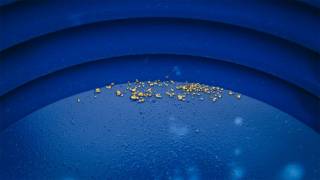Life on Mars? Scientists hope to find it by decoding Martian DNA - ’We Can Rebuild Them’

Apparently, there just aren’t enough genomes for Craig Venter to sequence here on Earth, so he’s making plans to send a DNA sequencer to Mars.
"There will be life forms there," Venter said, with his usual confidence, at a Wired Health conference this week in New York.
If he can build a machine to find it, the next steps would be to decode its DNA, beam it back to Earth, put those genetic instructions into a cell and then boot up a Martian life form in a biosecure lab.
It may sound far-fetched, but assuming that there is DNA to be found on the Red Planet - a big assumption, to be sure - the notion of equipping a future Mars rover to sequence the DNA isn’t so crazy.
Venter has already sent his yacht around the globe to scoop up seawater and sequence whatever DNA it found in marine microbes. He has also been working on technology to create small genomes from scratch and insert them into living cells to bring these organisms to life. The difference now is that all of this technology would be applied to Mars.
It’s highly unlikely that any DNA-based life forms could survive on the Martian surface, so Venter’s "biological teleporter" (as he dubbed it) would dig under the surface for samples to sequence. If they find anything, "it would take only 4.3 minutes to get the Martians back to Earth," he said. "Now we can rebuild the Martians in a P4 spacesuit lab."
Venter isn’t the only one looking for Martian DNA. According to a report in the MIT Technology Review, so is Jonathan Rothberg, founder of the genome sequencing company Ion Torrent.
Rothberg is working with NASA-funded scientists from the Massachusetts Institute of Technology and Harvard to adapt his company’s Personal Genome Machine for use on Mars, the report says. It’s part of a NASA astrobiology project known as the Search for Extra-Terrestrial Genomes, or SETG.
MIT research scientist Christopher Carr is part of a group that’s "building a miniature RNA/DNA sequencer to search for life beyond Earth," according to his website. "Top places to look include Mars, Enceladus (a moon of Saturn), and Europa (a moon of Jupiter)."
Carr told Tech Review that one of the biggest challenges is shrinking Ion Torrent’s 30-kilogram machine down to a mere 3 kg - light enough to fit on a Mars rover.
That’s just one of the hurdles. NASA has no firm plans for a rover to succeed Curiosity, the lab-on-wheels that reached the Red Planet in August. Even if a new rover gets the green light, there’s no guarantee that a gene sequencer would get one of the coveted spots for research instruments.
Article from: phys.orgComments









We're Hiring
We are looking for a professional video editor, animator and graphics expert that can join us full time to work on our video productions.
ApplyHelp Out
Sign up for a membership to support Red Ice. If you want to help advance our efforts further, please:
DonateTips
Send us a news tip or a
Guest suggestion
Related News













